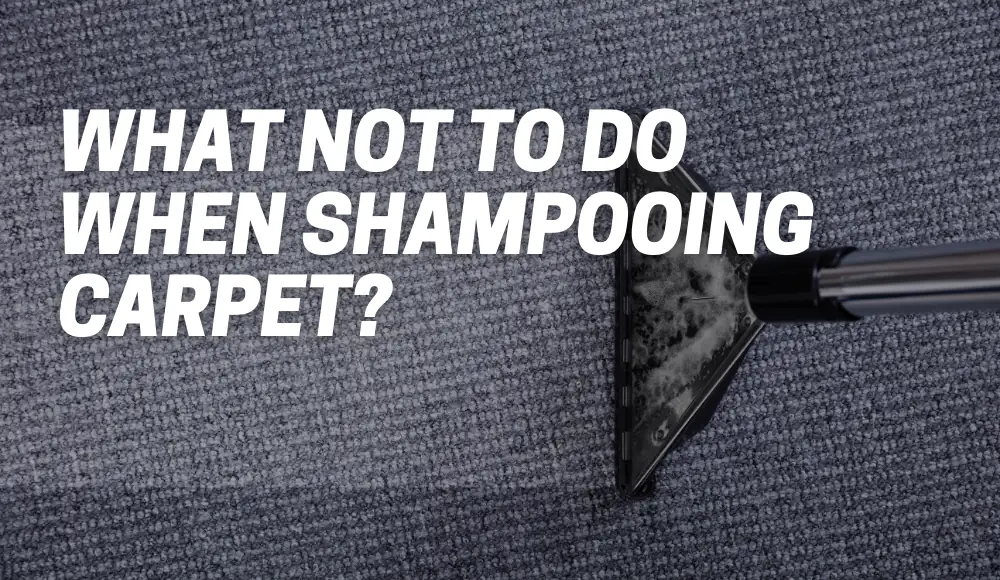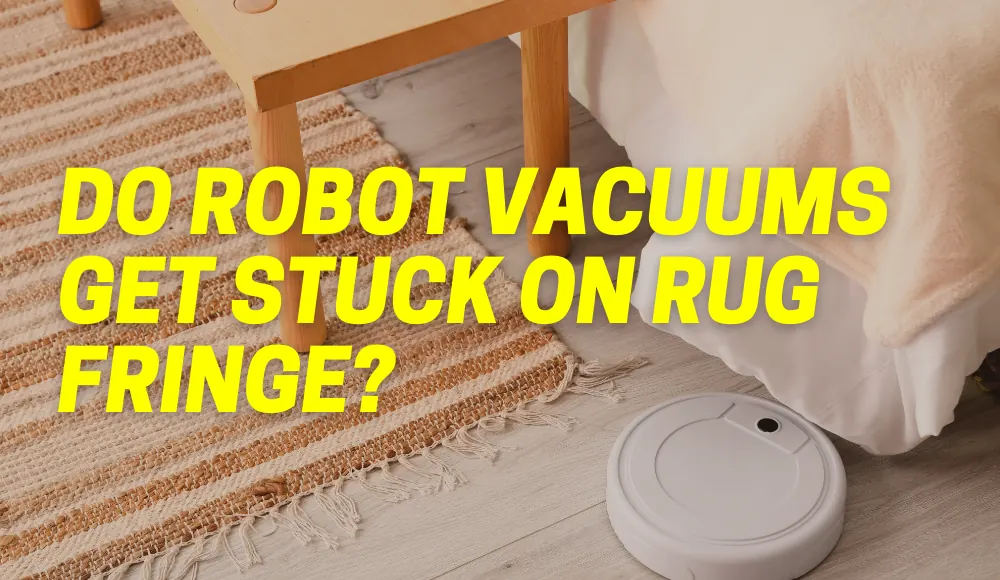Last updated on November 2nd, 2023 at 01:00 am
If you’re a proud carpet owner, you know the struggle of keeping it clean and fresh. Over time, carpets accumulate dirt, stains, and odors, making it essential to give them a thorough cleaning. One popular method for deep cleaning carpets is shampooing.
However, there are certain pitfalls to avoid to ensure the best results. In this article, we’ll explore the dos and don’ts of shampooing your carpet. By following these guidelines, you’ll be able to revitalize your carpet without any mishaps.
What is the Proper Way to Shampoo Carpet?
Shampooing carpet is a tried and tested method for deep cleaning.
When done correctly, it can remove embedded dirt, stains, and allergens, leaving your carpet looking and feeling rejuvenated.
Here are some essential steps to follow when shampooing your carpet:
- Preparation: Before diving into the cleaning process, clear the area by removing any furniture or obstacles that may obstruct your access to the carpet. This will allow you to shampoo the entire surface evenly.
- Vacuuming: Start by thoroughly vacuuming the carpet to eliminate loose dirt and debris. This step is crucial as it helps prevent the dirt from spreading and clogging the shampooer.
- Choosing the Right Shampoo: Selecting the appropriate carpet cleaner is vital for a successful shampooing session. Look for a product specifically designed for your carpet type and follow the manufacturer’s instructions regarding dilution ratios and application techniques.
- Testing in a Hidden Area: Before applying the shampoo to the entire carpet, it’s essential to test it in a small, inconspicuous area. This will help you ensure that the shampoo doesn’t cause any discoloration or damage to the carpet fibers.
- Following Application Instructions: Once you’ve confirmed the suitability of the shampoo, follow the instructions provided by the manufacturer. These guidelines typically involve diluting the shampoo, applying it evenly, and allowing it to dwell for a specific period.
- Scrubbing and Agitation: After the shampoo has dwelled, use a carpet brush or a machine with rotating brushes to gently scrub the carpet fibers. This process helps to loosen and lift dirt, stains, and grime.
- Rinsing: Once the carpet has been thoroughly scrubbed, it’s time to rinse away the shampoo. Fill the machine or a bucket with clean water and go over the carpet again, this time without adding any shampoo. This step ensures that no residue is left behind, preventing rapid re-soiling.
- Drying: After rinsing, remove as much moisture as possible from the carpet. You can achieve this by using a wet-dry vacuum or allowing the carpet to air dry with proper ventilation. Avoid walking on the carpet until it’s completely dry to prevent new dirt from being tracked in.
What Not to Do When Shampooing Carpet at Home
While shampooing carpet can be a relatively simple process, there are some common mistakes that many people make.
To avoid these pitfalls and achieve optimal results, here’s what you should never do when shampooing your carpet at home:
1. Using Too Much Shampoo
Remember, more isn’t always better. Using an excessive amount of shampoo can lead to over-saturation of the carpet fibers, making it challenging to rinse out completely. This can result in sticky residues that attract dirt and leave your carpet looking dull and unclean.
2. Skipping the Vacuuming Step
Vacuuming before shampooing is crucial for removing loose dirt and debris. Neglecting this step can cause the dirt to mix with the shampoo, creating a muddy mess that is difficult to clean. Ensure your carpet is thoroughly vacuumed before applying any shampoo.
3. Rushing the Dwell Time
Each carpet cleaner has a specific recommended dwell time, which is the duration the shampoo needs to remain on the carpet to work effectively. Avoid the temptation to rush this step as the shampoo needs time to break down stains and loosen dirt. Be patient and allow the shampoo to do its job.
4. Scrubbing Too Aggressively
While it’s essential to scrub the carpet to remove dirt, stains, and grime, excessive force can damage the carpet fibers. Scrubbing too aggressively may cause fraying or distortion, leaving your carpet looking worn out and damaged. Apply gentle pressure and let the shampoo and brushes do the work.
What Not to Do When Shampooing Carpet with a Machine
Shampooing your carpet using a machine can make the task more efficient and convenient.
However, it’s essential to avoid certain pitfalls that could compromise the effectiveness of the cleaning process.
Here are some things to avoid when using a carpet cleaning machine:
1. Using Incorrect Dilution Ratios
Different carpet cleaning machines require specific dilution ratios for the shampoo to work effectively. Using the wrong dilution can result in insufficient cleaning power or excessive foam generation, leading to difficulties in rinsing. Always consult the machine’s manual or the shampoo manufacturer’s instructions to ensure the correct dilution ratio.
2. Over-wetting the Carpet
Over-wetting the carpet with excessive water or shampoo can result in prolonged drying times and potential damage. It may also lead to mold and mildew growth. Follow the machine’s guidelines regarding water usage and make sure not to saturate the carpet excessively.
3. Not Emptying and Cleaning the Machine Properly
After completing the shampooing process, it’s crucial to empty and clean the machine thoroughly. Failing to do so can result in the growth of bacteria and mold within the machine, which may lead to foul odors and reduced cleaning efficiency. Follow the machine’s instructions for proper maintenance and storage.
What Should You Not Put in a Carpet Cleaner?
While it’s essential to use the right products when shampooing your carpet, it’s equally crucial to know what to avoid.
Here are some substances you should never put in a carpet cleaner:
- Bleach: Avoid using bleach or any cleaning product that contains bleach in your carpet cleaner. Bleach can cause discoloration and damage to the carpet fibers.
- Ammonia: Similarly, ammonia-based cleaners should be avoided as they can cause color fading and weaken the carpet fibers.
- Hot Water: Using excessively hot water in a carpet cleaner can lead to shrinkage or distortion of the carpet fibers. Always use water at a suitable temperature recommended by the manufacturer.
- Oily Substances: Keep oils, greasy substances, or any product containing oil away from your carpet cleaner. Oils can leave behind residue, attract dirt, and make it more challenging to rinse the carpet effectively.
- Harsh Chemicals: Avoid using harsh chemicals or strong solvents in your carpet cleaner as they can damage the carpet fibers, strip away color, or leave behind toxic residues.
Remember, always check the manufacturer’s guidelines and instructions for the specific carpet cleaner you’re using to ensure optimal cleaning and to protect your carpet’s integrity.
Conclusion
Shampooing your carpet can be a highly effective method to restore its cleanliness and appearance.
By following the proper techniques and avoiding common mistakes, you’ll be well on your way to achieving a fresh and rejuvenated carpet. Remember to use the correct shampoo, prepare the area adequately, and be patient during the process.
Treat your carpet with care, and it will reward you with years of comfort and beauty.
Now that you have a comprehensive understanding of what to do and what not to do when shampooing your carpet, it’s time to put this knowledge into action. Give your carpet the attention it deserves, and enjoy a clean and inviting living space!


